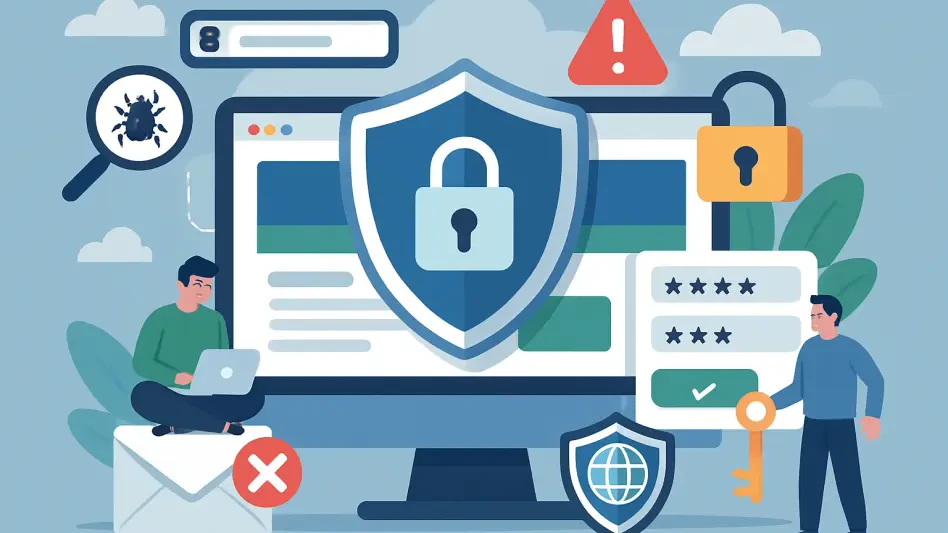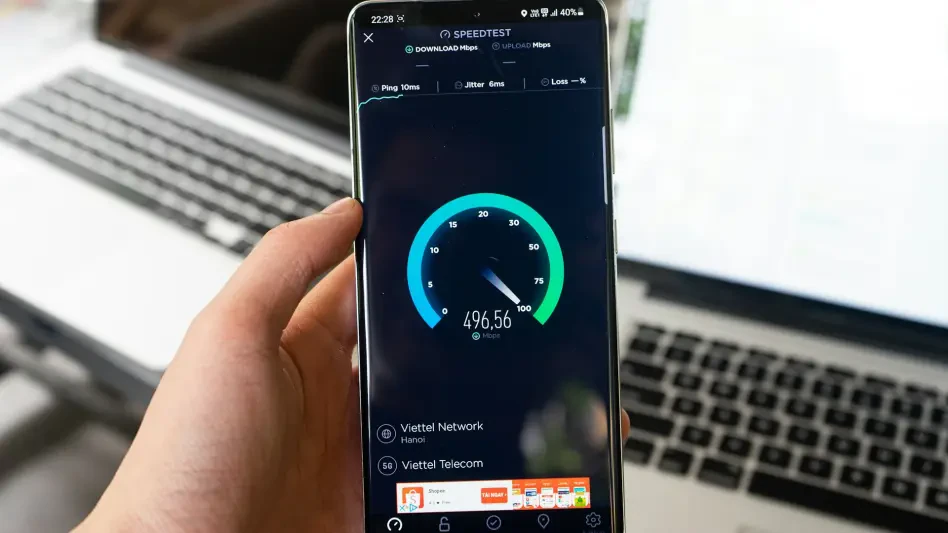In March, 2024, leading networking and IT company, Cisco, experienced a supply chain data breach. Cisco Duo, the targeted organization, provides multi-factor authentication and single-sign on access to clients, which essentially left hundreds of thousands of users vulnerable. Interestingly, the threat actors chose to access Cisco’s system via a less secure, third-party vendor.
This, in essence, is how supply chain attacks work, and is a growing problem across the business landscape. Research estimates that the number of supply chain attacks doubled in 2024 compared to previous years.
As the world becomes increasingly more interconnected, outsourcing becomes more popular due to resource savings. However, this comes with the increased risk of exposure to threat actors, as third-party suppliers may not have the same cybersecurity standards.
The Emerging Threat of Supply Chain Attacks
Supply chain attacks are a growing concern in the cybersecurity industry. In 2022, supply chain attacks increased by 600%, and there’s no sign that this form of hacking will slow down soon. Threat actors target supply chains because they are typically the weakest link in an organization’s chain.
By breaching the supply chain defenses, attackers can gain access through linkages in the interconnected networks and systems. This allows them to amplify their impact and creates additional challenges for recovery teams.
Supply chain attacks are not only a concern for private companies, as government infrastructure is equally targeted and considered vulnerable. These breaches are especially egregious, going beyond financial loss and causing reputational damage for companies, and global economic disruptions for nation-states.
Unpacking the Mechanics: How Supply Chain Attacks Work
To fully appreciate the seriousness of supply chain attacks, it’s important to understand how they occur. Typically, hackers use a multi-stage process that exploits vulnerabilities in trust and connectivity within supply networks.
Stage 1: Identifying Vulnerable Links
Hackers always look for the weakest point of entry. In a supply chain ecosystem, this is usually a software provider with outdated security protocols, a service company that hasn’t updated employee training (making them vulnerable to phishing attempts), or hardware manufacturers with inadequate security. With numerous supply chains in a single organization, threat actors have several entry points.
Stage 2: Gaining Initial Access
After hackers have identified a soft entry, they will employ any number of methods to gain access to a system, whether it’s phishing, or traditional hacking to exploit vulnerabilities. Phishing, using social engineering tactics, is still the most popular way to gain access to systems. They use a number of techniques aimed at manipulating employees into clicking a link or downloading an infected file to provide hackers with access.
Stage 3: Exploiting the Access
Hackers then use the supply chain access point as a springboard to launch an attack on the primary target. Threat actors aim to steal credentials to log into systems and spread malware through internal channels like software updates. By exploiting the vulnerabilities in a supplier, threat actors can sully the relationship between supplier and target.
The Far-Reaching Impact of Supply Chain Attacks
Supply chain attacks have far-reaching effects on the businesses that hackers target. Here are some of the ways that supply chain attacks impact businesses:
Data Breaches: One of the main reasons why hackers try to gain access to businesses is to access sensitive information like customer data, financial records, or intellectual property. Impacted businesses are usually slapped with regulatory penalties and legal repercussions for violating policies like the General Data Protection Regulation.
Additionally, they suffer reputational damage and a loss of consumer trust. In the case of the Cisco Duo supply chain attack, the hackers downloaded SMS logs. Considering Cisco Duo is used for multi-factor authentication, the hackers would’ve used the messages to gain access to one-time pins and codes.
Operational Disruption: Supply chain attacks cause major chaos and disruptions to a target organization’s operations. In the midst of a supply chain attack, production can be shut down, service delivery is halted, and essential systems are compromised. In the energy and healthcare industries, supply chain attacks are not just inconvenient; they can have fatal outcomes.
Financial Consequences: As the world becomes more interconnected, governments around the world are pushing for the protection of sensitive data and cracking down on companies that violate regulations. Punitive measures come in the form of fines, with Meta currently holding the top spot for the most expensive fine to date, at $1.3 billion. Additionally, they face drawn-out court cases, a loss of investor confidence, and poor consumer relations.
Reputation Loss: Recovering from a supply chain attack requires more than a robust incident response. Targeted organizations need to also manage the public relations aspect of a data breach. Stakeholders and consumers may come to the conclusion that an organization has been negligent in their efforts to protect their data, and this has a negative impact on brand perception and value.
Proactive Measures: Fortifying Supply Chain Defenses
Although supply chain attacks pose a significant threat, organizations can adopt a proactive strategy to reduce risks. Below are key measures to enhance cybersecurity:
Conduct Comprehensive Risk Assessments: Incident response teams need to start by identifying vulnerabilities within their supply chain network. A thorough assessment of the security practices of all third-party suppliers, vendors, and partners is necessary. Security specialists must ensure that each player in their ecosystem adheres to security standards and has an exemplary track record based on past breaches.
Rigorous Vetting of Suppliers: A vital part of the onboarding process of new partners should include rigorous due diligence. Ideally, this includes a verification of their security standards and protocols, compliance with industry-related regulations, and an assessment of their reputation. Teams are encouraged to review accounts continuously.
Implement Robust Security Controls: Cybersecurity personnel are advised to implement enhanced organizational defenses. Firewalls, detection systems, and antivirus software are some of the advanced security measures that experts recommend implementing to detect and prevent unauthorized access. Also included under recommendations for security controls is the regular updating of patch systems to ensure unknown vulnerabilities and potential backdoor entrances are eliminated.
Continuous Monitoring and Auditing: Continuous monitoring and auditing are required to secure a supply chain. Cybersecurity specialists need to be especially aware of any unusual activity that’s flagged, which may appear as an unexpected software update or hardware change. Tools like endpoint detection and response solutions and cloud security posture management systems are essential to providing real-time insights into supply chain operations.
Develop Incident Response Plans: In the aftermath of an attempted data breach, an incident response plan needs to be followed. Developing a sound incident response plan allows security teams to contain a breach, and includes additional steps for stakeholder notification, and compliance with regulation. Experts suggest regular drills to ensure teams remain responsive and effective in the face of a crisis.
A Call to Action: Building a Secure Digital Ecosystem
The far-reaching impacts of supply chain attacks call for a collaborative approach to security. Not only do supply chain vendors have to prioritize organizational changes that promote a security-first approach, but the various third parties involved in a single business ecosystem need to be on the same page, too.
Creating a secure digital ecosystem requires partners to embrace a security-first culture, which requires the promotion of cybersecurity as a core organizational value. By making security a foundational aspect of every level of the supply chain, businesses can ensure that every process is monitored and evaluated for threats and vulnerabilities.
Experts predict that supply chain attacks will cost businesses $138 billion by 2031. Investing in robust cybersecurity to prevent these attacks is vital and in the long term, is a cost-saving effort. With artificial intelligence, hackers are able to attack vulnerabilities faster, and at scale. Investing in advanced technologies capable of detecting and preventing supply chain attacks is key to defending against them.
Additionally, cross-industry collaboration is key to unearthing best practices and threat intelligence. This not only informs vendors and target businesses of new methods and patterns to be aware of, but is also useful in establishing policy and updating regulations to keep pace with the ever-changing face of cybersecurity.
The Role of Zero Trust in Mitigating Supply Chain Attacks
Zero trust architecture has two principles: trust nothing, verify everything. DevSecOps teams adopting a zero trust approach must work on the assumption that all network activity is potentially threatening until proven otherwise. This extreme approach has several benefits for supply chain security.
Verifying All Identities
In a zero-trust environment, every user, application, and device is scrutinized to ensure that it is what it claims to be. Access is restricted until people and endpoints have verified their identity, which provides safeguards in a complex network system.
The average car manufacturing company, for example, has an average of 250 tier-one suppliers, which multiplies to a number of 18,000 across the entire supply chain network. Threat actors could potentially use any of these to access a targeted organization. Ensuring verification at every interaction is a major catch for organizations managing large operations.
Limiting Lateral Movement
Zero trust considers the possibility of a threat actor slipping past the first guardrail. The second layer of defense is called the “principle of least privilege.” This is an access-limiting defense mechanism that ensures every user or entity only has access to what they need in accordance with their roles.
By limiting permissions, lateral movement is restricted. This means that an attacker cannot move seamlessly from one area to another within a target organization’s network. In the event of a breach, a hacker’s impact is contained, and this minimizes the impact of an attack. Lateral movement is a key factor that enables hackers to disrupt supply chains.
Minimizing Attackers’ Visibility
By employing these restrictions, zero-trust environments become more difficult for hackers to analyze. They manage a delicate balance between maximizing internal visibility while remaining elusive to outsiders. This is to prevent cyber criminals from easily finding and exploiting vulnerabilities.
The segmented nature of zero trust architecture means that only high-level administrators understand who has access to specific data or which applications are connected to others. This makes it difficult for cybercriminals to navigate networks, and security teams are unable to quickly identify vulnerabilities before attackers can find them.
Enabling Better Vulnerability Management
Another key aspect of zero trust is that it improves the management of vulnerabilities. Continuous monitoring and auditing is necessary to ensure that supply chains remain safe and secure, in the face of emerging threats. Proactive risk management is essential to managing supply chain security and zero trust networks make this easier.
Typically, potential weak entry points and backdoors are only noticed after they’ve been exploited or when a security team is employed to look for them. With a zero trust design, everything is considered suspicious from the outset and this makes risk analysis an ongoing effort. This allows businesses to constantly uncover vulnerabilities and weaknesses, which can be addressed proactively.
Conclusion
Supply chain security is no longer just an IT concern—it is a fundamental business imperative. The increasing frequency and severity of supply chain attacks demand that organizations take a proactive, multi-layered approach to defense. By understanding the mechanics of these threats and implementing comprehensive security strategies—including robust risk assessments, continuous monitoring, and the adoption of zero-trust architecture—businesses can significantly reduce their exposure.
The path to a secure supply chain requires collaboration, vigilance, and investment in cutting-edge cybersecurity technologies. Organizations that prioritize security at every level of their supply chain will not only protect themselves from devastating breaches but also strengthen trust with their partners, customers, and stakeholders. As cyber threats continue to evolve, a commitment to security-first principles will be essential in ensuring resilience, operational stability, and long-term success.







